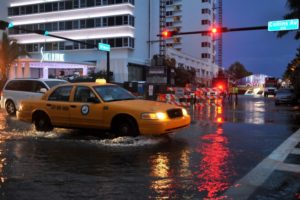
Predictions for hurricane season include the need for mold testing

As the CDC says, “After natural disasters such as hurricanes, tornadoes, and floods, excess moisture and standing water contribute to the growth of mold in homes and other buildings. When returning to a home that has been flooded, be aware that mold may be present and may be a health risk for your family.”
Now is the time to start planning for this year’s hurricane season, which begins on June 1 and runs through November 30. You might know to stock up on bottled water and nonperishable food items and to make sure your car has a full tank of gas, but are you prepared to contend with the mold that might start growing in your home or office?
According to the weather experts at Colorado State University, we can expect 13 named storms this year – five of them hurricanes and two of them major hurricanes.
If you’ve ever had your TV on when a hurricane was approaching the coast of Florida, you would think the biggest threat from the storm might be the winds. The strength and speed of the winds determine whether a storm is a Category 1 storm or a Category 5. It’s not wind, however, but water that is the greatest threat.
If you live along the coast, the immediate and most dangerous threat comes from the storm surge and large waves produced by a hurricane. If you live inland, it is the torrential rains that can be associated with a storm that pose the biggest threat.
“If your home was flooded or exposed to even a minimal amount of water, you should assume mold is growing, even if you don’t see it or smell it,” says the Laborers’ Health & Safety Fund of North America. “In wet, humid conditions, mold can develop in as little as 24 hours.”
The CDC says, “The key to mold control is moisture control. It’s important to get your home dried out as soon as possible.”
To do that, they recommend that you:
- Use a wet vacuum to remove standing water and a dehumidifier to help remove moisture – if you have electrical power or a generator.
- Use fans and open all the windows.
- Remove water-damaged items, including furniture, carpet, appliances and drywall.
“The general rule of thumb,” according to the CDC, “is if the moldy area is less than 10 square feet (roughly a three foot by three foot section) you can handle the job yourself.”
We hope Mother Nature goes easy on all of us this year, but if you do need help cleaning up after a storm, AirMD’s experts are ready to assist you with services ranging from mold removal in Miami, FL to Houston mold testing. Let us know how we can help you!






